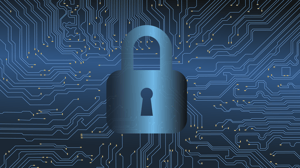As I’m sure you are aware, cybersecurity is increasingly becoming a priority for the Indiana Department of Education. In fact, technology directors are now being asked to evaluate their schools in the following areas:
- Risk Analysis
- Internal Penetration Testing
- External Penetration Testing
- Phishing Campaigns
- Password Procedures
- Vendor Practices
- Data Security
- Denial-Of-Service Attacks
- Ransomware Attacks
- Physical Security of Equipment Rooms
I don’t know about you, but when I hear words like “cybersecurity”, “data privacy”, “phishing”, and “ransomware”, I feel overwhelmed and confused. If you’re like me (and many other educators), you may not even know where to start with making sure that your school is prepared to face today’s safety and security challenges! But don’t worry – our team of experts has got you covered, with a wide range of solutions to help you with any/all of the problems that you might be facing.

In essence, it comes down to THREE main ways that you can help keep your students safe online – (1) Protect them from external threats and harmful content, (2) Monitor your network for threats and develop an action plan to strengthen your network security, and (3) Teach your staff and students how to stay safe online! Let’s dive into each of these a bit more.
- We must make sure that we are taking steps to protect our students and staff from external threats and harmful content. In today’s fast-paced and technologically-driven world, it can be hard to balance the desire to effectively use technology for teaching and learning with the need to ensure safety. While most exposure to inappropriate content is accidental in nature, you can never be too careful with the number of safeguards that you have in place to protect your learners. Therefore, it is critical that schools have the right content filters, safety measures/tools, and policies and procedures in place before technology is ever placed in the hands of students and teachers.
- You cannot sit back and wait for your network to be attacked before taking action. The old saying, “The best offense is a strong defense” is certainly true here. Therefore, you MUST have a game plan developed ahead of time. It truly isn’t a question of IF your network will be attacked, but rather WHEN, HOW, and BY WHOM. If you wait until you are under attack to strategize, it could be too late.
- All of the tools, gadgets, and strategies in the world cannot replace the value of spending time educating your students and teachers about how to stay safe online. In matters of cybersecurity, users are often the weakest link, inadvertently comprising themselves, their data, or even your network. Make sure not to overlook your most valuable asset – your people – when developing a solid plan for cybersecurity. Investing in professional development and teachable moments are essential to keeping your school community safe online.
Cybersecurity doesn’t have to be a scary topic. By remembering the three main areas of focus to keep your students safe, you’ll be able to create a secure learning environment for your district!

